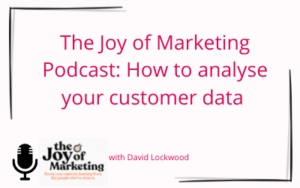While lockdowns in the last few years saw customer acquisition soar, opening up has brought retention challenges.
Five areas to consider to improve customer retention are:
1. Ensure your active customer definition is up to date
Understanding repeat purchase rates and what defines an active customer is critical as these vary wildly from business to business. One gardening company discovered that once loyal, regular purchasing customers had developed an established garden, they often wouldn’t buy again for another three years. This has forced it to adjust how it defines active customers to avoid labelling them as lapsed and putting them in the wrong programme that could alienate them. Make sure your active customer definition still holds true.
Amongst the delegates, the value retained customers contributed to their businesses showed wide variations. This was often driven by how long they had been trading. While younger brands found 40% of their revenue coming from repeat purchases, this shot up to 80% for mature businesses. Having a 60:40 split between new and repeat revenue was cited as a good balance.
2. Don’t overlook the needs of your loyal customers
Traditional catalogue-led companies saw their businesses flip over the lockdowns – with online sales now representing up to 75% of their overall orders. However they need to be mindful of how existing customers prefer to buy. While card payments make up most transactions for many, some people still prefer to pay by cheque. Companies must be geared up to accept non-card payments to keep loyal, profitable customers.
3. Identify your customer journey
Consumers need to see a message up to eight times across any touchpoint before they act, so measuring across all touchpoints to identify the customer journey and attribute value to each one is critical. One fashion brand that had focused on better understanding its customer journey discovered that its omnichannel buyers were twice as valuable as online-only customers, with pure in-store customers being the least. So start adapting your marketing by gaining insights into your consumer’s journey.
4. Success through sign ups
With the impending death of third-party cookies, gaining first-party data is essential for marketing effectively to your customers in the future. Encouraging them to sign up for email updates was highlighted as a valuable way of achieving this as, on average, subscribers have a higher customer lifetime value than non-subscribers.
But don’t just focus on online. Retailers with physical stores should encourage and incentivise their in-store teams to data capture at the point of sale. And with consumers now familiar with QR codes, retailers are using them in-store to drive sign ups by offering discounts to encourage them to scan them.
70% was recognised as a good in-store sign-up rate, and using both QR codes and manual intervention can help drive this higher.
5. Understanding retention means understanding lapsing
A key to improving retention is understanding why people leave. While most businesses focus on welcoming new customers and using the opportunity to explain reasons for buying, finding out why people leave is often ignored. Yet knowing this is vital to plug your gaps, overcome the issues around why people stop buying and keep profitable customers buying. Start paying more attention to this area.
If you’re struggling with customer retention and looking for support, contact us at [email protected], and we’ll be happy to talk with you.




